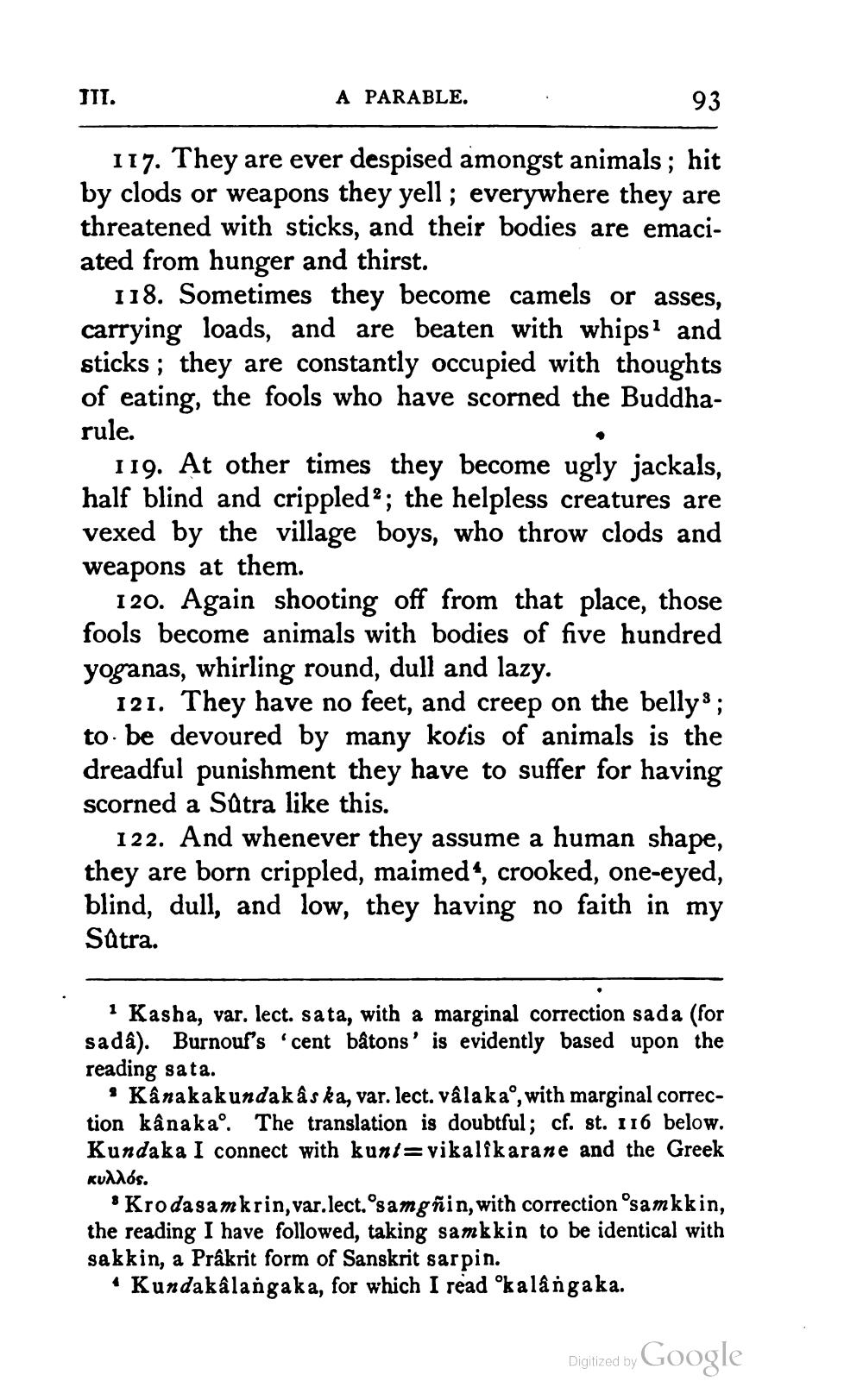________________
III.
A PARABLE.
117. They are ever despised amongst animals; hit by clods or weapons they yell; everywhere they are threatened with sticks, and their bodies are emaciated from hunger and thirst.
118. Sometimes they become camels or asses, carrying loads, and are beaten with whips? and sticks; they are constantly occupied with thoughts of eating, the fools who have scorned the Buddharule.
119. At other times they become ugly jackals, half blind and crippled?; the helpless creatures are vexed by the village boys, who throw clods and weapons at them.
120. Again shooting off from that place, those fools become animals with bodies of five hundred yoganas, whirling round, dull and lazy.
121. They have no feet, and creep on the bellys ; to be devoured by many kotis of animals is the dreadful punishment they have to suffer for having scorned a Satra like this.
122. And whenever they assume a human shape, they are born crippled, maimed“, crooked, one-eyed, blind, dull, and low, they having no faith in my Sutra.
1 Kasha, var. lect. sata, with a marginal correction sada (for sada). Burnouf's 'cent bâtons' is evidently based upon the reading sata.
• Kânakakundakâs ka, var. lect. vâlakao, with marginal correction kânaka°. The translation is doubtful; cf. st. 116 below. Kundaka I connect with kunt=vikalîkarane and the Greek Kullós.
* Kro da samkrin, var.lect.osamgñin, with correction osamkkin, the reading I have followed, taking samkkin to be identical with sakkin, a Prakrit form of Sanskrit sarpin.
Kundakâlangaka, for which I read ok alângaka.
Digitized by Google




